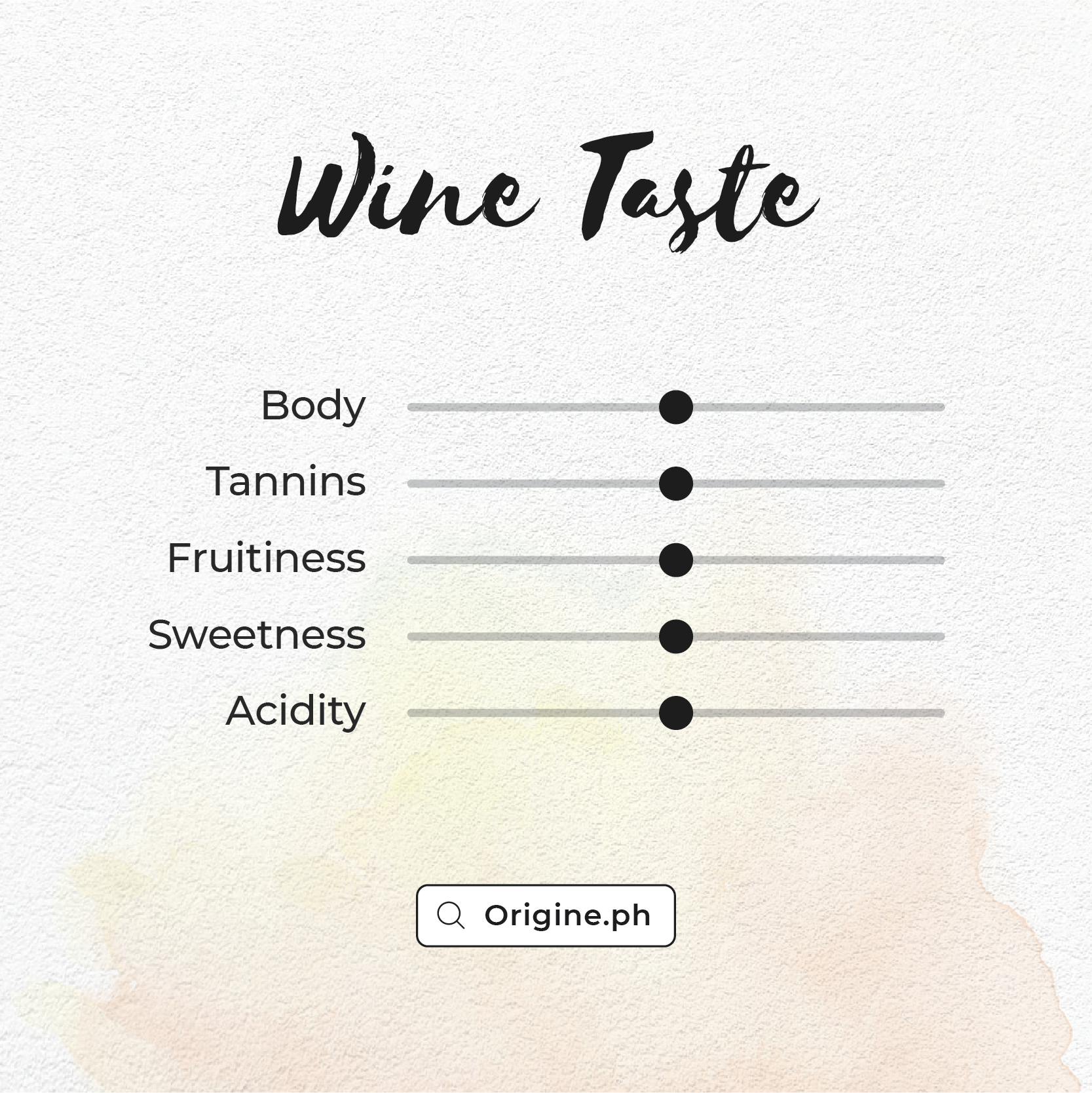
Many elements contribute to the flavors bound in a bottle of wine. The seemingly infinite combinations of aspects such as fruit, terroir, and vinification methods provide the winemaker with free rein to convey these influences and concoct their artisanal masterpieces. To best appreciate what makes each wine unique and enjoyable, one must look beyond the big picture and distinguish, if not analyze, these elements and nuances.
Here are some fundamentals that contribute to the taste of wine:
Body
Body is the overall impression of how a wine tastes and feels. Numerous factors contribute to body: grape varietal, vintage, terroir, alcohol content, and so on. Higher alcohol usually means a fuller wine, as does how long its legs – drops that fall down the inside of the glass – travel, and the duration taste lingers in the mouth.
Acidity
A tingling sensation on the tongue and palate are indicative of acidic wines, which are zesty and tangy. Sourness equals acidity, ergo; a wine that makes your mouth pucker is an acidic wine. A highly acidic wine can still be palatable, of course, especially when contextualized with how dry or sweet it is – sweetness can lessen the intensity of acidity in foods and in wine while dryness emphasizes it.
Sweetness
Sweet wine is usually thicker and leggier. A somewhat oily sensation also stays on the tongue with sweet wines. Dry is the opposite of sweet – little in the way of residual sugar remains in the wine due to lengthier fermentation. Keep in mind that a “dry” white wine doesn’t connote what it does to your mouth – a wine with a lot of alcohol and strong tannins may dry out the mouth but neither high alcohol or tannic content are always a given when it comes to dry wine.
Tannin
Tannins indicate the presence of compounds, which come from grapeskin and seed, that dry the mouth and add bitterness to a wine. Tannic wines are bitter on the sides of the tongue and front of the mouth, drying out the mouth after swallowing and leaving a lingering bitter aftertaste.
Fruit
The overall fruit flavor of a wine is often a factor in choice of wine. Red wines can exhibit a flavor profile of blackfruits such as blueberry and raspberry, while white wines may have citrus and orchardfruit notes like lemons and apricot. Bringing a wine’s fruit flavors to the forefront are floral, herbaceous, and mineral accent notes.

